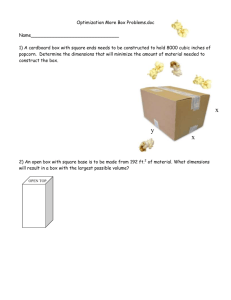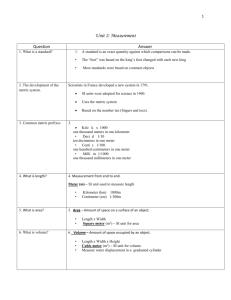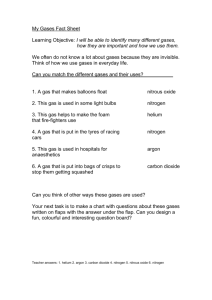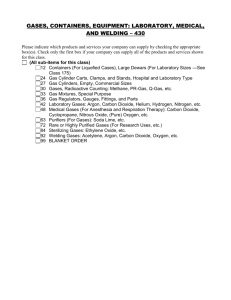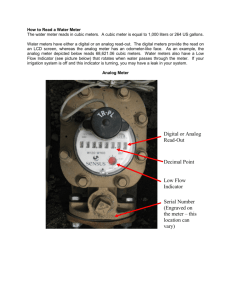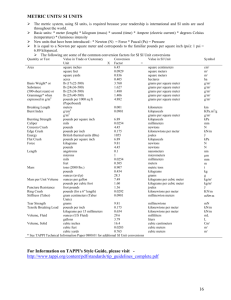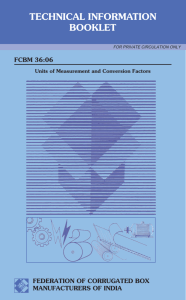How Much Air ...Is There?
advertisement
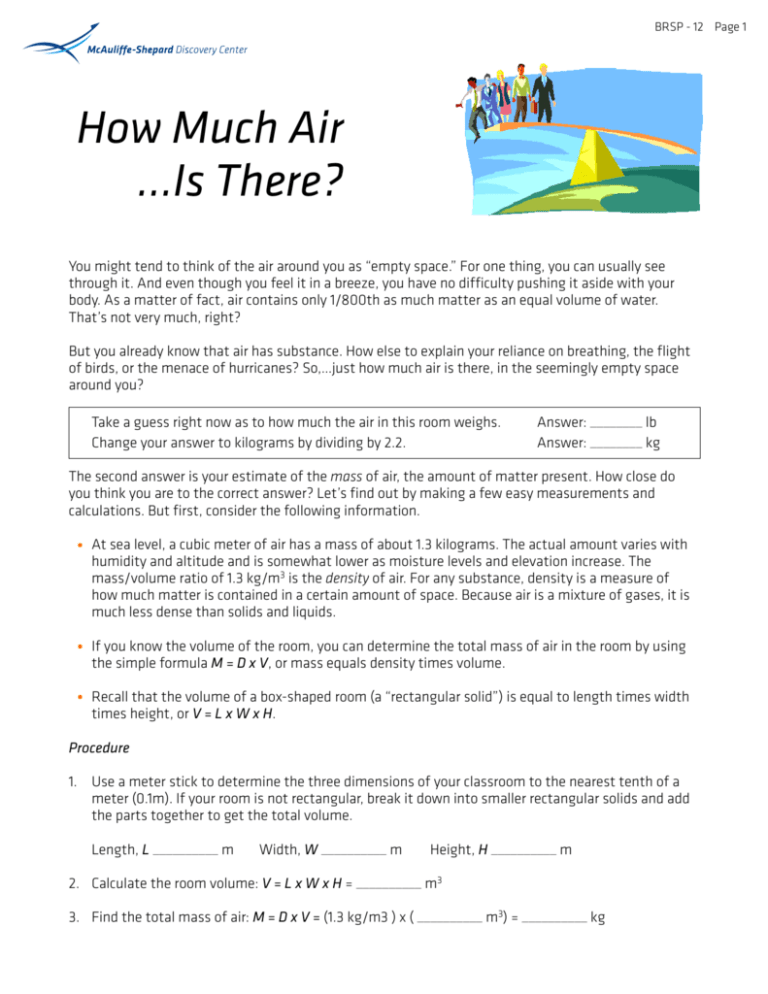
BRSP - 12 Page 1 How Much Air ...Is There? You might tend to think of the air around you as “empty space.” For one thing, you can usually see through it. And even though you feel it in a breeze, you have no difficulty pushing it aside with your body. As a matter of fact, air contains only 1/800th as much matter as an equal volume of water. That’s not very much, right? But you already know that air has substance. How else to explain your reliance on breathing, the flight of birds, or the menace of hurricanes? So,…just how much air is there, in the seemingly empty space around you? Take a guess right now as to how much the air in this room weighs. Change your answer to kilograms by dividing by 2.2. Answer: ________ lb Answer: ________ kg The second answer is your estimate of the mass of air, the amount of matter present. How close do you think you are to the correct answer? Let’s find out by making a few easy measurements and calculations. But first, consider the following information. At sea level, a cubic meter of air has a mass of about 1.3 kilograms. The actual amount varies with humidity and altitude and is somewhat lower as moisture levels and elevation increase. The mass/volume ratio of 1.3 kg/m3 is the density of air. For any substance, density is a measure of how much matter is contained in a certain amount of space. Because air is a mixture of gases, it is much less dense than solids and liquids. If you know the volume of the room, you can determine the total mass of air in the room by using the simple formula M = D x V, or mass equals density times volume. Recall that the volume of a box-shaped room (a “rectangular solid”) is equal to length times width times height, or V = L x W x H. Procedure 1. Use a meter stick to determine the three dimensions of your classroom to the nearest tenth of a meter (0.1m). If your room is not rectangular, break it down into smaller rectangular solids and add the parts together to get the total volume. Length, L __________ m Width, W __________ m Height, H __________ m 2. Calculate the room volume: V = L x W x H = __________ m3 3. Find the total mass of air: M = D x V = (1.3 kg/m3 ) x ( __________ m3) = __________ kg BRSP - 12 Page 2 4. Compare the calculated answer with your original guess in kilograms. How close were you? Does the calculated answer make sense? Check your math before asking your teacher for confirmation of the answer. How does the mass of air in the room compare with a person’s mass? Answer in one or two complete sentences. 5. Once you are sure of the correct answer, complete the table below to see how many kilograms of different gases are present in the room. Air is made up of approximately 78.1 percent nitrogen, 20.9 percent oxygen, 0.9 percent argon, 0.04 percent carbon dioxide, and trace amounts of other gases. Simply multiply the percentage of each component by the total mass of air to determine the amounts of these four components. Component Nitrogen Oxygen Argon Carbon Dioxide Percent (as a decimal) 0.781 0.209 0.009 0.0004 Total Mass of Air (kg) Mass of Component (kg) BRSP - 12 Page 3 How Much Air...Is There? Teachers’ Notes Objective: Students will build on their existing concepts of air, atmosphere, and mass by determining the actual mass of air inside a room and calculating the individual quantities of its major gaseous components. Grade Level: Middle/High NSES: A3, A4, A5, A6, B4, D4 NHSCF: 1a, 2a, 2c, 4b, 6a Key Concepts This activity provides an opportunity for students to test some of their assumptions about matter and mass. It is also an opportunity for students to consider the physical nature of gases, in general, and our atmosphere, in particular. Although gases have much lower densities than their corresponding solid and liquid phases, the gases we are most familiar with – the ones that make up the air we breathe – still contain substantial amounts of matter. Most people will be surprised to learn just how much matter is contained in an average-size room. It is important to understand how matter is quantified, as this point is a frequent source of confusion. The terms weight and mass are often (erroneously) interchanged in ordinary usage; and reliance on the English system of measurement only adds to the confusion. As scientists, we will confine our usage to the metric system. (In the English system of measurement, the unit of mass is the slug!) Weight is a measure of the force of gravity acting on a body. Consequently, an astronaut weighs less on the Moon than on Earth. Mass, on the other hand, is a measure of the amount of matter in a body. A jellyfish would have the same mass on Earth as it would on the moon or in the far reaches of space, if such a thing were possible. In the metric system, the units for mass are the gram, milligram, kilogram, etc. The units for volume are based on the meter: cubic centimeter, cubic meter, etc. Density, being equal to mass divided by volume, is expressed in units of milligrams per cubic centimeter, kilograms per cubic meter, and so forth. The density of air is approximately 1.3 kg/m3 at sea level, varying slightly with changes in humidity, temperature, and barometric pressure, and is about 1/800th the density of liquid water. The value for air is roughly equivalent to the mass of three pints of milk in the volume occupied by a large refrigerator. Multiply three pints by the number of refrigerators that would fit inside a room, and a tangible concept begins to form of the mass of air in the room. BRSP - 12 Page 4 Sample Calculations 7.6 m Length, L __________ 8.3 m Width, W __________ 2.7 m Height, H __________ 170 Room volume: V = L x W x H = __________ m3 170 m3) = __________ 221 kg Total mass of air: M = D x V = (1.3 kg/m3 ) x ( __________ Component Nitrogen Oxygen Argon Carbon Dioxide Percent (as a decimal) 0.781 0.209 0.009 0.0004 Total Mass of Air (kg) Mass of Component (kg) 221 221 221 221 173 46 2 0.09
